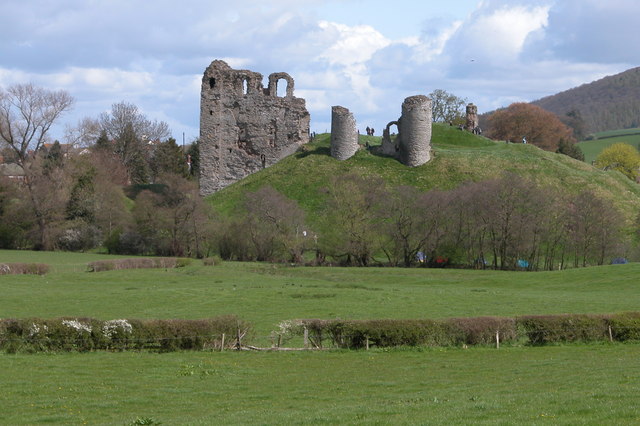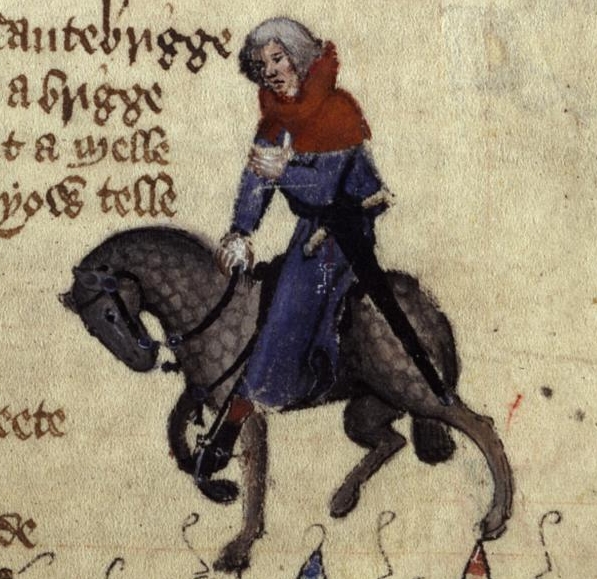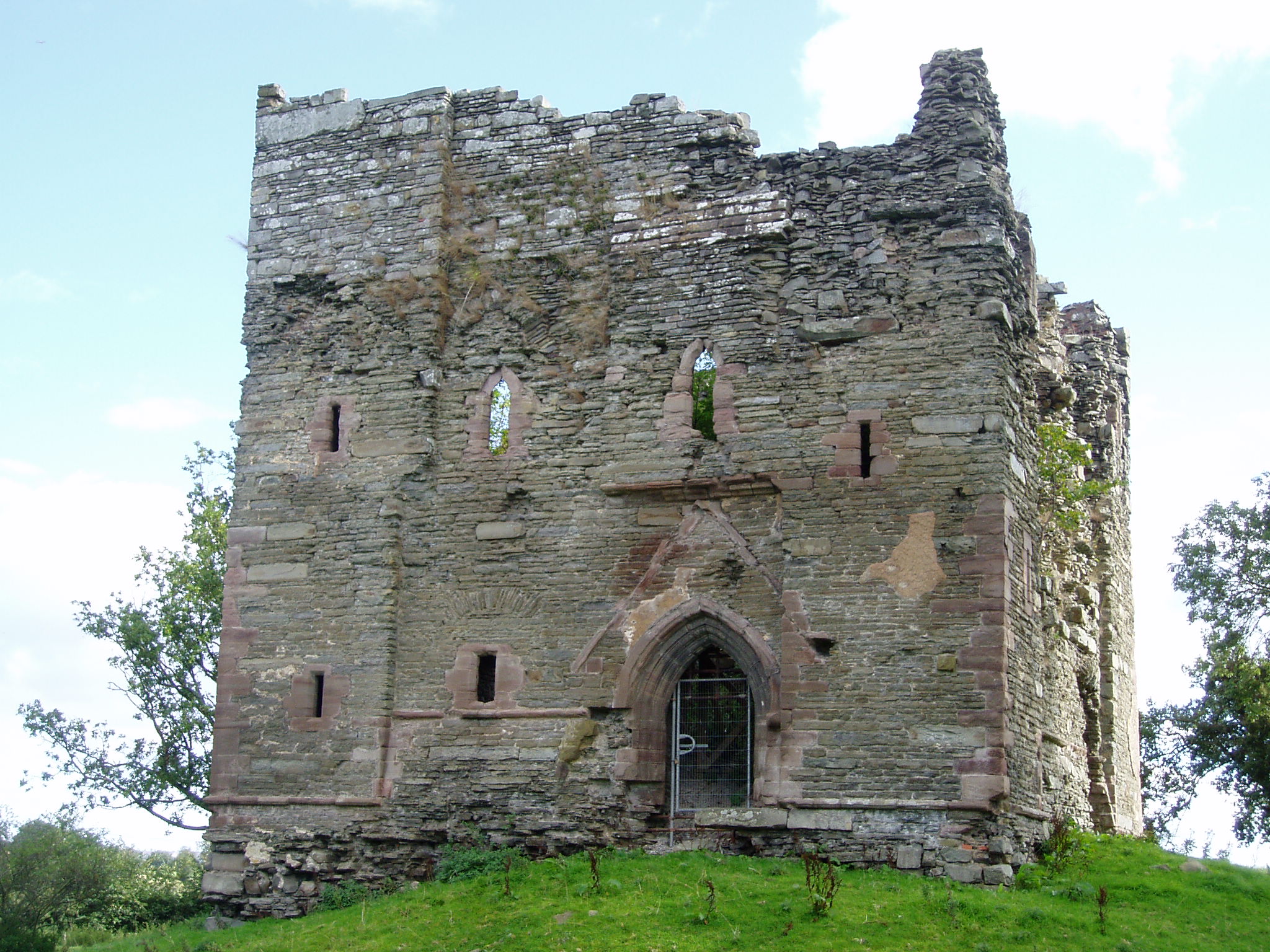|
Bicton, South Shropshire
Bicton (or previously sometimes Bickton) is a hamlet in southwest Shropshire, England, one mile north of Clun. The short River Unk passes through the hamlet. In previous centuries it was a township in the Clun division of the hundred of Clun. The Bicton Burial Circle is a prehistoric stone circle, located south of the settlement between the River Unk and River Clun. Two barrows are seen as circular crop marks. The cremation at the burial site is suspected to belong to the Beaker period. The hamlet has been in existence for centuries. Although not listed in the 1086 Domesday Book, it is mentioned in county court papers dating from 1221, in which the county ruled that John Fitzalan I, Lord of Clun, was right to claim that Bicton belonged to his fiefdom. Little remains of Bicton Castle, also known as Bicton Motte, a motte and bailey dating from the 11th or 12th century. The motte's height is 2.2 metres today, as parts have been dug away during gravel extraction. Origin ... [...More Info...] [...Related Items...] OR: [Wikipedia] [Google] [Baidu] |
Clun
Clun is a town in south west Shropshire, England, and the Shropshire Hills AONB, Shropshire Hills Area of Outstanding Natural Beauty. The 2011 United Kingdom census, census recorded 680 people living in the town.Combined populations for the two output areas covering the towan/ref> Research by the Campaign for the Protection of Rural England suggests that Clun is one of the "most tranquil" locations in England. History Clun takes its name from the river upon whose banks it stands. Deriving from the Welsh , it shares its very early Common Brittonic, Brythonic root with the two rivers Colne, in Lancashire and Essex, each of which has a town of the same name on its banks. Clun grew up around the site of an Anglo-Saxon church towards the end of the 7th century AD. However, in the surrounding area there was a scattered population at least as early as the Neolithic period, about 5000 years ago. Clun was on the historic drove road where flocks and herds were driven from Wales to the ... [...More Info...] [...Related Items...] OR: [Wikipedia] [Google] [Baidu] |
Clun Castle
Clun Castle is a medieval ruined castle in Clun, Shropshire, England. Clun Castle was established by the Norman lord Robert de Say after the Norman invasion of England and went on to become an important Marcher lord castle in the 12th century, with an extensive castle-guard system. Owned for many years by the Fitzalan family, Clun played a key part in protecting the region from Welsh attack until it was gradually abandoned as a property in favour of the more luxurious Arundel Castle. The Fitzalans converted Clun Castle into a hunting lodge in the 14th century, complete with pleasure gardens, but by the 16th century the castle was largely ruined. Slighting, Slighted in 1646 after the English Civil War, Clun remained in poor condition until renovation work in the 1890s. Today the castle is classed as a Grade I listed building and as a Scheduled Monument. It is owned by the Duke of Norfolk, who also holds the title of Baron Clun, and is managed by English Heritage. Architecture ... [...More Info...] [...Related Items...] OR: [Wikipedia] [Google] [Baidu] |
Listed Buildings In Clun
Clun and Chapel Lawn, Clun is a civil parish in Shropshire, England. It contains 160 Listed building#England and Wales, listed buildings that are recorded in the National Heritage List for England. Of these, one is listed at Grade I, the highest of the three grades, seven are at Grade II*, the middle grade, and the others are at Grade II, the lowest grade. The parish contains the small town of Clun, and smaller settlements, including Bicton, South Shropshire, Bicton, Chapel Lawn, New Invention, Shropshire, New Invention and Whitcott Keysett, and is otherwise entirely rural. The town has an ancient history, and its oldest surviving listed buildings are the remains of Clun Castle, and the Norman architecture, Norman west tower of St George's Church. A high proportion of the listed buildings are houses, cottages, farmhouses, and farm buildings, many of them timber framed, some with cruck construction, and dating from the 13th to the 18th century. In the churc ... [...More Info...] [...Related Items...] OR: [Wikipedia] [Google] [Baidu] |
Agroforestry
Agroforestry (also known as agro-sylviculture or forest farming) is a land use management system that integrates trees with crops or pasture. It combines agricultural and forestry technologies. As a polyculture system, an agroforestry system can produce timber and wood products, fruits, nuts, other edible plant products, edible mushrooms, medicinal plants, ornamental plants, animals and animal products, and other products from both domesticated and wild species. Agroforestry can be practiced for economic, environmental, and social benefits, and can be part of sustainable agriculture. Apart from production, benefits from agroforestry include improved farm productivity, healthier environments, reduction of risk for farmers, beauty and aesthetics, increased farm profits, reduced soil erosion, creating wildlife habitat, less pollution, managing animal waste, increased biodiversity, improved soil structure, and carbon sequestration. Agroforestry practices are especially preva ... [...More Info...] [...Related Items...] OR: [Wikipedia] [Google] [Baidu] |
Reeve (England)
In Anglo-Saxon England, a reeve (Old English: ) was an administrative official serving the king or a lesser lord in a variety of roles. After the Norman Conquest, it was an office held by a man of lower rank, appointed as manager of a manor and overseer of the peasants. In this later role, historian H. R. Loyn observes, "he is the earliest English specialist in estate management." Types ''Reeve'' is a general term that could refer to a variety of administrative officials. Royal reeves worked for the king, but nobles and bishops also employed reeves. Some reeves served as estate managers, while others held positions in towns and boroughs. Royal reeves In the late 7th and early 8th centuries, royal reeves oversaw royal estates. By the 10th century, royal reeves performed a variety duties in shires and hundreds. They enforced legislation and royal decrees. They presided over local courts, carried out police functions, and witnessed sales. A royal reeve's authority often ... [...More Info...] [...Related Items...] OR: [Wikipedia] [Google] [Baidu] |
Kempton, Shropshire
Kempton is a very small village in south Shropshire, England. The village was listed as one of William de Picot's holdings in the Domesday Book Domesday Book ( ; the Middle English spelling of "Doomsday Book") is a manuscript record of the Great Survey of much of England and parts of Wales completed in 1086 at the behest of William the Conqueror. The manuscript was originally known by ... of 1086.https://opendomesday.org/place/TQ1070/kempton/ It lies on the small River Kemp, which it takes its name from. See also * Listed buildings in Clunbury References External links Villages in Shropshire {{Shropshire-geo-stub ... [...More Info...] [...Related Items...] OR: [Wikipedia] [Google] [Baidu] |
Clunton
Clunton is a village in south Shropshire, England, to the east of the small town of Clun. Location It lies on the B4368 road between Clun and Craven Arms. It is part of the civil parish of Clunbury. The nearest railway station is Hoptonheath. The village is at above sea level. The village centres on the B4368, though it branches southwards at Clunton Bridge (which crosses the River Clun). Near the centre is "The Crown" pub and St. Mary's Church. The Crown In 1994 the village public house, The Crown, was threatened with closure. A group of locals clubbed together and bought it, rather than lose it altogether . They still own it today. The pub is co-owned by 30 people, mostly locals. It remains a traditional country pub, with a selection of local real ales; The Crown has an entry in the CAMRA ''Good Beer Guide'' 2015. Clunton Coppice Nearby to the south of the village is Clunton Coppice, a remnant of the oak coppice woodland which was abundant in this part of Shropshi ... [...More Info...] [...Related Items...] OR: [Wikipedia] [Google] [Baidu] |
Demesne
A demesne ( ) or domain was all the land retained and managed by a lord of the manor under the feudal system for his own use, occupation, or support. This distinguished it from land subinfeudation, sub-enfeoffed by him to others as sub-tenants. In contrast, the entire territory controlled by a monarch both directly and indirectly via their tenant lords would typically be referred to as their realm. The concept originated in the Kingdom of France and found its way to foreign lands influenced by it or its fiefdoms. In England, Wales and Northern Ireland, royal demesne is the land held by the Monarch, Crown, and ancient demesne is the legal term for the land held by the king at the time of the Domesday Book in 1086. Etymology The word derives from Old French , ultimately from Latin , "lord, master of a household" – ''demesne'' is a variant of ''domaine''. The word ''barton'', which is historically synonymous to ''demesne'' and is an element found in many place-names, can refer t ... [...More Info...] [...Related Items...] OR: [Wikipedia] [Google] [Baidu] |
Clun Valley
Clun is a town in south west Shropshire, England, and the Shropshire Hills Area of Outstanding Natural Beauty. The 2011 census recorded 680 people living in the town.Combined populations for the two output areas covering the towan/ref> Research by the Campaign for the Protection of Rural England suggests that Clun is one of the "most tranquil" locations in England. History Clun takes its name from the river upon whose banks it stands. Deriving from the Welsh , it shares its very early Brythonic root with the two rivers Colne, in Lancashire and Essex, each of which has a town of the same name on its banks. Clun grew up around the site of an Anglo-Saxon church towards the end of the 7th century AD. However, in the surrounding area there was a scattered population at least as early as the Neolithic period, about 5000 years ago. Clun was on the historic drove road where flocks and herds were driven from Wales to the markets in the Midlands and London. At the time of the Norman C ... [...More Info...] [...Related Items...] OR: [Wikipedia] [Google] [Baidu] |
Acton, Shropshire
Acton is a village in Shropshire, England, south of Bishop's Castle Bishop's Castle is a market town in the south west of Shropshire, England. According to the 2011 Census it had a population of 1,893. Bishop's Castle is east of the Wales–England border, about north-west of Ludlow and about south-west of .... External links Villages in Shropshire {{Shropshire-geo-stub ... [...More Info...] [...Related Items...] OR: [Wikipedia] [Google] [Baidu] |
Hopton Castle
Hopton Castle is situated in the village of the same name which lies approximately halfway between Knighton and Craven Arms, in the English county of Shropshire. Hopton Castle featured in the TV series ''Time Team'' in 2010. A ruin since the early 18th century, it was partially restored between 2006 and 2011, and was officially re-opened to the public as a visitor attraction in December 2011 by the Duke of Gloucester. Norman castle The castle may have been founded in the 12th century as a motte and bailey by one of the Hoptons as a mesne lord of the Says of Clun Castle. Walter de Hopton possibly built the stone castle during the Barons' War of the 1260s. The bailey was fortified in stone and a rectangular two-storey keep was built. The last Walter Hopton died during the Wars of the Roses and the castle passed by marriage to the Corbet family of Moreton Corbet castle. From them it passed to Henry Wallop (died 1642) when he married Elizabeth Corbet, daughter of Robert Corbe ... [...More Info...] [...Related Items...] OR: [Wikipedia] [Google] [Baidu] |
De Say
de Say (Saye, Sai) is the surname of an old Norman noble family originating from Sai, Orne. The first records are about William de Say and Picot de Say, Norman conquerors. The de Say family, held lands in England and France. Once settled and rewarded for their part in the Norman invasion of 1066, it is recorded their family name was anglicised to de Jay. This then became the surname Jay as we know it today. Historical records note that, just as in their Norman roots in Sai, France; the hamlet of Jay, in Shropshire, was taken as their name. This area was within the Barony of Clun, a powerful Norman stronghold in Shropshire. Whilst the name of De Say/De Sai evolved to become De Jay/Jay, branches of the House of De Say became linked to the Duke of Norfolk. This occurred when Isabella de Say was born to Helias de Say/de Jay. Isabella was the only surviving child of Helias de Say upon his death in 1165; Helias was the third lord of Clun. She is notable for helping to create the ... [...More Info...] [...Related Items...] OR: [Wikipedia] [Google] [Baidu] |







